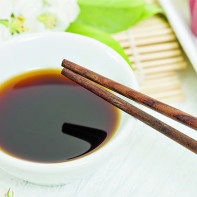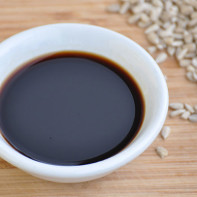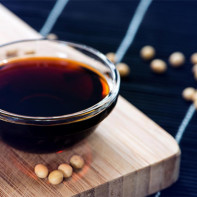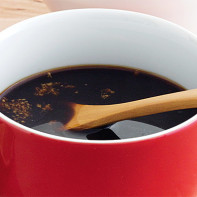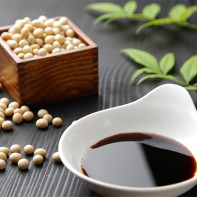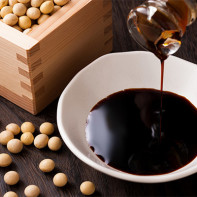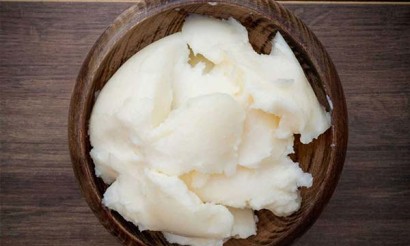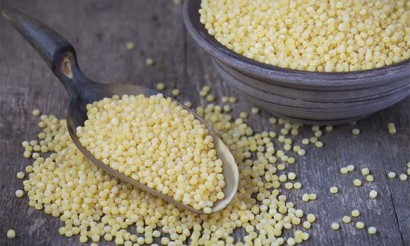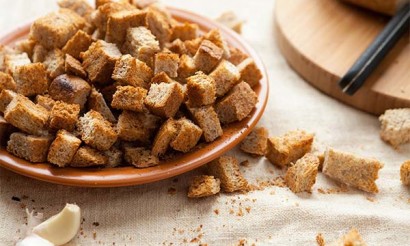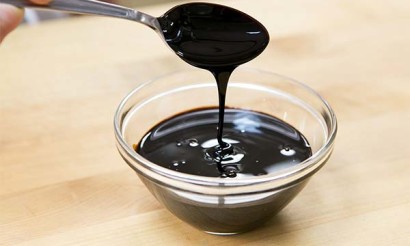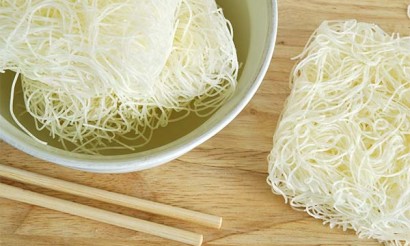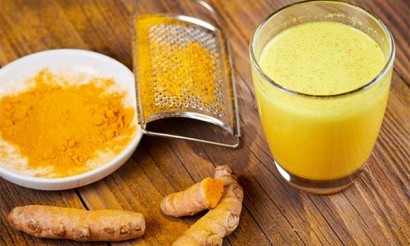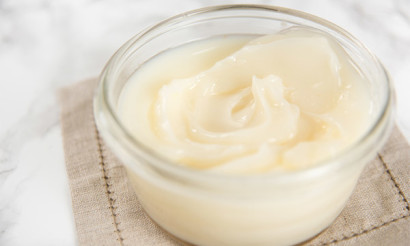Soy sauce: calories, useful properties and contraindications
Soy sauce is a product of Eastern cuisine, which has settled down well in Russian conditions. It is a condiment of liquid consistency and very dark color. It has a characteristic smell, which to some people may seem pungent. But it is the presence of such an aroma that tells you that you are looking at a high-quality natural product. After all, this smell is the result of a long fermentation process of soybeans and specially roasted wheat or barley grains. Although not all of the ingredients for a traditional Chinese or Japanese recipe are commercially available, it is theoretically possible to make the sauce at home as well.
- What soy sauce is made of
- Why is soy sauce salty
- Composition and calories
- How soy sauce is useful
- For Women
- For Men
- For Pregnancy
- Breastfeeding
- For children
- Can I lose weight with soy sauce?
- Soy sauce in medicine
- Diabetes
- For pancreatitis
- For Gastritis
- For gout
- Cholecystitis
- Soy sauce in cosmetology
- Cooking Applications
- What can be used as a substitute for soy sauce?
- Hazards and contraindications
- Symptoms of Soy Sauce Allergy
- How to choose and store soy sauce
- How to make soy sauce at home
- Can we use soy sauce during Lent?
- Interesting Facts
How soy sauce is made
The traditional recipe for soy sauce involves a long fermentation process that lasts about two or three months. The Chinese version involves only soybeans. The Japanese version uses the mentioned wheat grains, which give the sauce a slightly sour taste. A koji fungus is responsible for the fermentation process.
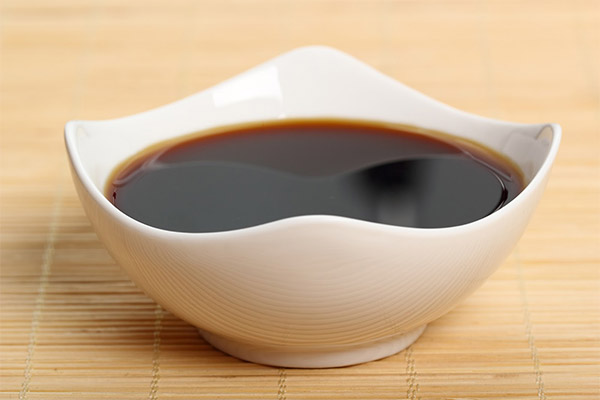
The longer the fermentation process goes on, the richer and more harmonious the soy sauce becomes. Of course, in today's environment, you can't spend a lot of time making soy sauce. For this reason, many companies use another method: hydrolysis of soy proteins. The process is then much faster, and instead of months, it only takes a couple of days until it is ready. This helps reduce the final cost of the product considerably. However, the taste will not be as intense as with traditional cooking.
There are manufacturers who mix hydrolyzed sauce with a small amount of natural sauce. It's a little more expensive, but it's more flavorful and tasty.
So, in classic Japanese sauce there should be only four main ingredients: the main ingredient is soybeans, additional ingredients are wheat or barley, water and salt. In the old days, these ingredients were used to make soy sauce by hand. Today, the fermentation process takes place in a factory, and companies try to improve and automate the production even if they use the traditional recipe.
The process is carried out as follows: the soybeans are soaked for a long time and then stewed or boiled. The wheat grains are lightly roasted and then milled to start the fermentation process. Salt is added to the water until the desired consistency is obtained.
But it would be impossible to make a classic soy sauce without aspergillus, a microscopic fungus. They are added to a mixture of already milled wheat and prepared soybeans. These fungi create the ideal conditions for the fermentation process. In the old days this process simply could not produce a predictable result because the mixture was simply left in vats under the sun. Today, the sauce is made in factories where strictly defined environmental parameters are set so that the process develops properly and the product has the same flavor and aroma regardless of the batch of production.
When the mash (called koji) is considered ready, it is placed in tanks and a salt solution is added. All of this is thoroughly mixed. In Japanese tradition, the resulting must is called moromi, and its fermentation period is several months. However, it would be more correct to say that not only alcoholic fermentation takes place, but also lactic fermentation. With most producers it takes several months, but with expensive brands that supply the sauce to the imperial court - up to six months.
After that, the second must is pressed, poured into other containers, filtered, and the remainder pressed off. The result is a raw sauce, which is left in the tank for a few days so that the microscopic particles that remain in it can settle. Then the sauce is heated, otherwise the fermentation process will not stop. By the way, at this stage it still remains transparent.
Why is soy sauce salty?
Many people think that soy sauce itself is salty solely due to the salt contained in the products. In fact, as mentioned above, salt is always added in small quantities. This is not for taste, but to prevent the growth of pathogenic microorganisms. Precisely because the sauce has a distinct flavor and contains little salt, it allows for less salt in dishes prepared with it.
However, nowadays there are mildly salty soy sauce on the market - less salt is added to it. Sweet sauce is also found, and vinegar and sugar are added to it. Some producers produce a special variety for sushi and sashimi. This sauce contains special seasonings for seafood. So it does not necessarily taste salty.
Composition and caloric content
Soy sauce has a low energy value. It is only 60-70 kcal per 100 g, depending on the specific ingredients. At the same time, it contains a lot of useful ingredients, including proteins, vitamins and other active substances.
In general, the composition of the sauce can be represented as follows:
- Protein - up to 7%. And soy sauce contains a lot of essential amino acids, which the body is not able to synthesize itself, but they are necessary for its normal functioning.
- Monosodium glutamate. Although most people think that this is just a flavor enhancer, and quite harmful, it is actually a free amino acid. In small amounts, it will not cause any harm, and to date, there are no studies that have confirmed its negative effects on the body if consumed in moderation.
- Soy isoflavones. These are several substances at once - glycitin, genistein and daizdein with their glycosides. They are generally beneficial to cardiovascular activity and even brain function.
- Antioxidants. They perform several functions at once, including speeding up metabolic processes, reducing inflammation, and slowing down aging processes.
In addition, soy sauce contains ascorbic acid, vitamins B and PP. They normalize metabolism and lower "bad" cholesterol.
What is soy sauce good for?
This product, thanks to its chemical composition, is useful for both men and women. Mainly highlight its beneficial effects on the cardiovascular and reproductive system.
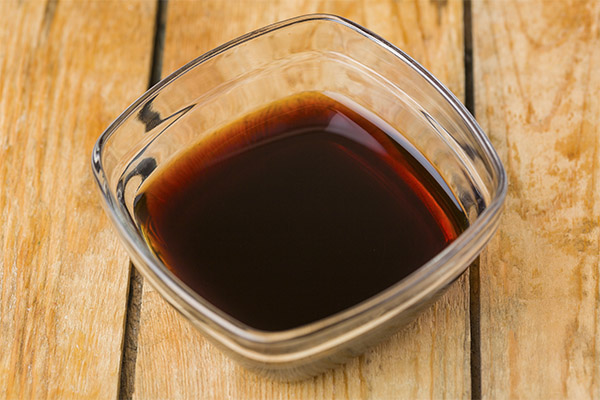
For women
The benefits of soy sauce for women are thought about when studies have shown that Japanese women are much better able to withstand menopause than representatives of other nationalities. A more in-depth study of the issue has found that it is all about the use of soy sauce. In particular, the experts from the University of Tokyo conducted a study which showed that the Japanese women, whose diet includes soy sauce, during the menopause actively secretes a substance called C-extra. It partially compensates for the decrease in estrogen production during this period.
Soy sauce and other soy-based products have been shown to help relieve various unpleasant symptoms of menopause, such as hot flashes and occasional joint pain.
Studies have shown that the above-mentioned genistein helps to combat and even prevent osteoporosis (and this disease is mainly characteristic of women who during the menopause calcium is washed out of the bones at a fairly rapid rate).
And regular consumption of soy sauce reduces the risk of breast cancer.
For men
Members of the stronger sex are more likely to experience cardiovascular disease. Therefore, the property of soy sauce to reduce the risk of developing such pathologies is more important to them. Due to the presence of isoflavones, the product cleans the walls of blood vessels from accumulations of cholesterol, which could be transformed into atherosclerotic plaques. In addition, these substances normalize blood pressure.
The high content of antioxidants in soy sauce helps strengthen the immune system. Their anti-inflammatory activity allows preventing prostatitis, reducing the risk of prostate cancer and other reproductive system organs.
However, men should be careful: soy sauce contains phytohormones, that is, hormone-like substances of plant origin. But their properties are closer to estrogens, that is, to female sex hormones. When using large quantities of soy products, the production of male sex hormones can be reduced, and this leads to unpleasant consequences.
In Pregnancy.
For expectant mothers, this sauce is useful because it allows you to add less salt to your dishes. And this means that the risk of edema and hypertension is reduced. In addition, soy sauce contains many substances that will be beneficial to future mothers. For example, these are essential acids, B vitamins, including folic acid, antioxidants, iron, etc. Finally, the product allows you to establish the digestive process.
But you need to be careful, and if the expectant mother and before pregnancy had episodes of acute gastritis or pancreatitis, it is better to give it up.
When breastfeeding
In the postpartum period, soy sauce can quickly restore the hormonal background, strengthen bones, normalize cardiovascular activity. But it can cause, in some cases, increased gas formation in the baby. Therefore, until the child is 4 months old, you should not use this sauce. If even after this age, mom will encounter colic or an allergic reaction in the baby, she will have to give up soy sauce.
For children
Babies under the age of 3 years should not be given soy sauce. However, this applies to any condiment, since the child's digestive system is not yet well developed. But gradually soy sauce can be introduced in small quantities into a child's diet. For schoolchildren it is useful because it has a positive effect on muscle development.
Can I lose weight with soy sauce?
Due to the fact that soy sauce contains less salt, it relieves swelling, along with which the extra pounds go. In this case, the product itself with a low energy value. But thanks to its bright taste and aroma, it replaces much more fatty and caloric sauces and seasonings. For example, sour cream or ready-made mayonnaise, which, unlike homemade, poses a serious threat to the heart and figure. If you want, it can be substituted for olive or sunflower oil, but a certain amount of fat is still needed.
At the same time, it should be remembered that soy sauce can be consumed only in small quantities. It contains monosodium glutamate, which increases the appetite, and because of this there is always a risk of eating more than is allowed (according to medical requirements).
Soy sauce in medicine
At present, the soy sauce is being studied by medics because it is one of the most important ingredients in the Oriental cuisine that accounts for longevity of the Japanese and the excellent health of the elderly.
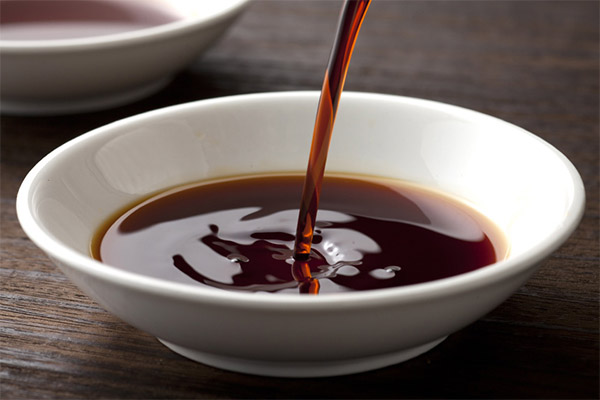
For Diabetes Mellitus
Only foods with a low glycemic index can be used in this disease. The soy sauce has an index of only 20, which allows you to include it in your diet, but only if it is a high-quality natural product. Be sure to read the composition of the sauce and make sure that it does not contain anything other than soybeans, wheat grains, and salt. Even the presence of additional spices is extremely undesirable, not to mention the presence of preservatives (such a product with diabetes will only bring harm).
In pancreatitis.
In this disease, soy sauce can negatively affect the pancreas. The fact is that its slightly salty and sour taste can stimulate the production of gastric juice and increase the secretory function of the pancreatic gland. Therefore, its consumption will have a negative impact on health. And this applies even to the classic sauce recipe, which has almost no ingredients other than soybeans and grains.
As for those recipes in which vinegar, various spices and garlic are added to soy sauce, such compositions can significantly increase inflammation in the pancreas. Therefore, such sauces are absolutely contraindicated in any form of pancreatitis.
Natural soy sauce, obtained by long-term natural fermentation, can be useful, as it contains many vitamins and antioxidants with anti-inflammatory properties. But it is also not allowed in acute pancreatitis, exacerbation of chronic disease and in case of unstable remission. Small amounts of soy sauce can be added to the diet only during prolonged remission. But at the first signs of deterioration or at least discomfort, it will have to be excluded again.
With gastritis
Since soy sauce, like any other seasoning, stimulates the production of gastric juice, it should be abandoned not only in the acute stage of the disease, but also in the remission stage. But this applies only to gastritis with high acidity. With reduced acidity, you can consume the product in small quantities.
At gout.
Concerning the use of soy sauce with gout, medics have no consensus. Some researchers believe that soy, like other legumes, will only increase the amount of purines that cause this disease. Others believe that after fermentation, soy sauce will reduce the amount of purines. In any case, it is better not to risk and include the product in the diet only from time to time and in small quantities.
For cholelithiasis
In this disease, you need to reduce the consumption of salt and spices. They can well be replaced with a quality sauce, which will consist only of the four ingredients listed above. But soy sauce with spicy additives should be abandoned.
Soy sauce in cosmetics
The unique chemical composition of soy sauce enables its use in cosmetology as well. Because of its high content of antioxidants it slows down the aging process and makes the skin more elastic. In addition, it improves the condition of the hair and helps to make it more lush.
In home cosmetology, soy sauce is often used as a bleaching agent to get rid of freckles. To do this, it is recommended to wash your face in the morning and evening with brown, but not black sauce without any spices.
Another recipe is used to get rid of acne. To do this, take 1 tbsp. sauce, mix it with the same amount of olive oil and fresh chicken yolk. This composition is applied to the face for 25 minutes, then thoroughly wash.
To make the hair thick and lush, make such a mask - mix 2 tbsp. of sauce with the same amount of olive oil, whip with one egg yolk and distribute evenly over the entire length of the hair. Means leave for an hour, then wash out with normal shampoo.
Cooking Applications
Soy sauce is an indispensable ingredient in oriental cuisine. Today, however, it is also becoming part of the European culinary tradition, often replacing olive oil or mayonnaise. It is added to various salads, meat and fish dishes.
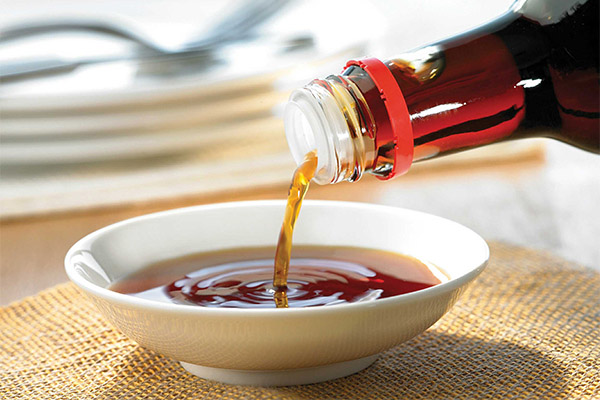
For example, you can mix soy sauce with olive oil and a little fresh lemon juice - it would be an excellent dressing for any vegetable salad. It's good to add some sesame seeds to it as well. It can also be mixed with mushroom, mustard, and shrimp dressing.
Lighter sauce is considered universal and can be used with any kind of food, while darker sauce complements meat dishes.
Soy sauce can be added to meat and vegetable dishes in a stew as well as to soup while cooking. But it should be done 10 minutes before cooking, so that the flavor has time to unfold. Only caution should be exercised - no more than 1 tsp of soy sauce per pot should be added to the soup. The same amount can be used for rice dishes.
Soy sauce, lemon and herbs can be used to make marinades for meat and fish. It is also good in egg dishes. For example, you can whip up an omelet with sour cream mixed with a little soy sauce. The dish will turn out lush, with a beautiful golden hue and subtle flavor.
How can I substitute soy sauce?
To replace this ingredient, you need to find a seasoning that will recreate the oriental notes in the dish. The choice depends on what you need the sauce for. If for a marinade, you need to take regular mayonnaise, add the same amount of water, red and black pepper, the juice of one lemon and mix until smooth. This is an excellent marinade for kebab.
If we are talking about soy sauce in the salad, then to replace it take vinegar, and preferably balsamic, because it already has these unusual notes. It can be mixed with olive oil and mustard (preferably in powder).
Another option for salad dressing is vegetable oil mixed with apple cider vinegar, garlic, and spices. To reproduce not only the taste but also the color, the oil is brought to a boil, and then chopped garlic is added. And only after it has cooled down can the other ingredients be added.
Health Hazards and Contraindications
The harm of soy sauce is a relative concept, mostly all adverse effects are associated either with its inordinate use, or with a low-quality product purchased at the market. The maximum allowable amount of soy sauce is 30 grams per day. Exceeding this amount means flatulence and digestive disorders at the very least.
But even the highest quality sauce has its own contraindications for use. They include:
- Gastrointestinal diseases, mainly such as peptic ulcers, colitis, etc., because the sauce can irritate the inflamed intestinal walls.
- Allergies and hormonal diseases caused by excess estrogen.
Some researchers also believe that soy sauce should not be consumed for migraines because it will only make the headache worse.
Symptoms of Soy Sauce Allergy
The signs of an allergic reaction here are the same as for any other food intolerance. This dyspeptic symptoms, nausea, vomiting, abdominal pain, the appearance of a rash, especially on the hands and face. At such signs, you need to start taking antihistamines.
How to choose and store soy sauce
Be sure to read the composition in the store. As a rule, you can distinguish the natural sauce from the synthetic one even when comparing prices. A quality product will have only 4 ingredients, and a protein content of 6-8% should be indicated. And even if its fermentation has been artificially accelerated, it is better than a sauce with dyes, flavor enhancers, and flavorings. Unscrupulous manufacturers may also include hydrochloric or sulfuric acid. But there really shouldn't be any.
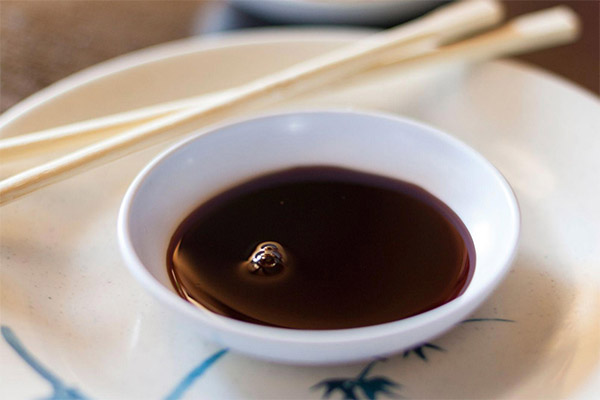
Quality sauce is always sold only in glass bottles. It should have a pronounced brown tint, you should look at it through the light - the liquid must be clear, without sediment. The label should indicate that it is a natural fermentation. Artificial product looks cloudy, and the consistency may be similar to syrup. The chemical sauce tastes harsher and saltier, it may leave an unpleasant aftertaste, but of course you can't taste the product in the store.
The sauce should be stored according to the manufacturer's recommendations. A sealed container can be kept in a kitchen cabinet. After opening the bottle, it should be placed in the refrigerator. It is not recommended to keep it open longer than two months.
How to make soy sauce at home
Although there are many varieties of soy sauce in stores today, there is no guarantee that all of it is a quality product, produced without preservatives and dyes. But you can make soy sauce at home to be sure that there are no harmful ingredients.
You will need 120 g of soybeans, 2 tablespoons of softened butter, 1 tablespoon of wheat flour, 50 ml of mushroom broth and sea salt to taste. Boil the soybeans and grind them in a blender until they are puréed, then add the other ingredients and put the mixture on the fire. Braise the sauce on the heat until it boils, then turn it off and let it cool.
Can I Use Soy Sauce During Lent
Soy sauce contains no animal ingredients. In Lent, it can be consumed with vegetable dishes to diversify the table.
Interesting Facts
Although Japan and China compete with each other for the first place in the preparation of soy sauce, it still came to Europe from the Land of the Rising Sun. And the Europeans did not know soy itself at that time. And until the beginning of the 20th century, the word "soy" in most languages meant sauce and not beans.
The characteristic color of this sauce is the result of a chemical transformation known as the Maillard reaction. The same reaction makes baked goods ruddy, forms an appetizing crust on a piece of roast meat, etc. In this process, sugars react with amino acids (in the case of the sauce, there are almost two dozen). The resulting taste and color will be entirely due to this reaction, not to the type of feedstock.
«Important: All information on this site is provided for informational purposes only purposes only. Before applying any recommendations, consult a health care professional. specialist. Neither the editors nor the authors shall be liable for any possible harm caused by materials."

